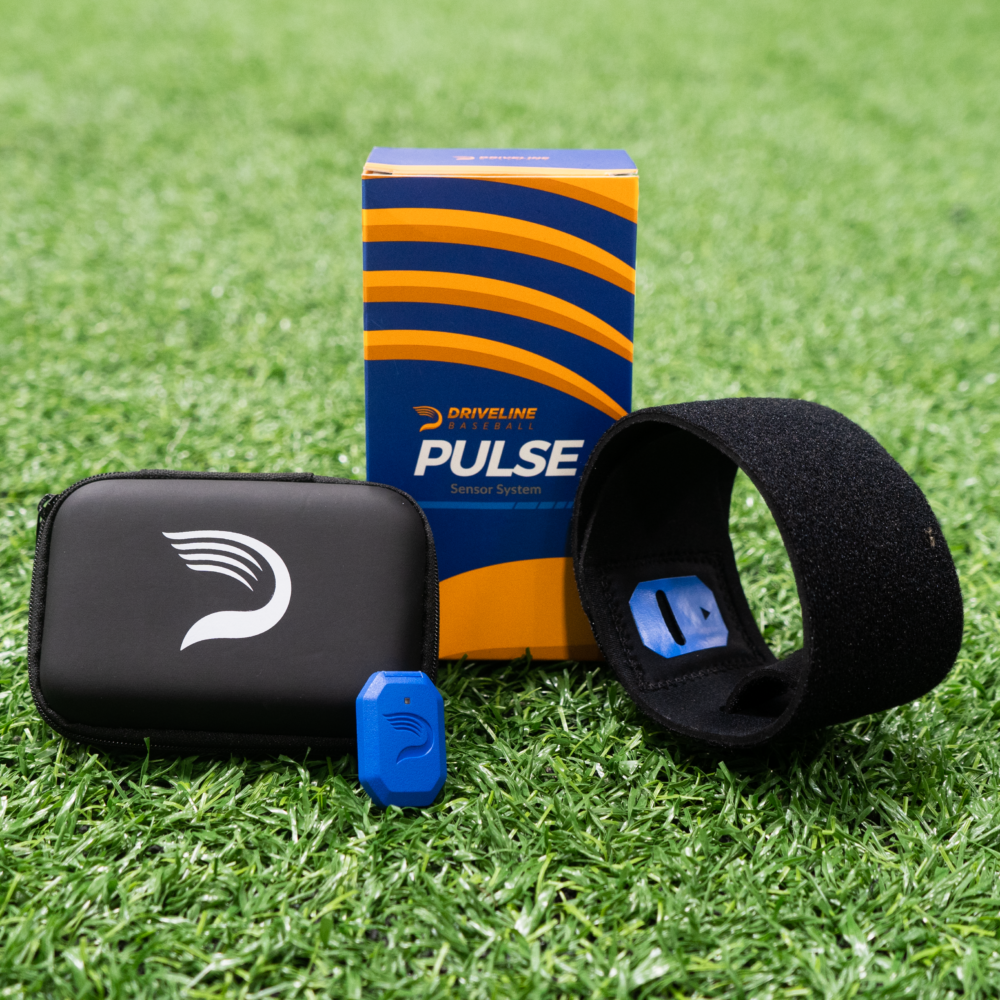PULSE Metric Updates

In our announcement of PULSE, we noted that we made updates to some of the metrics that are calculated by the sensor. Those changes were:
- More accurate weighted ball elbow torque
- Removing shoulder rotation from the app
In this post, we’ll go into how we made the changes and what it means for you as a user.
Elbow Torque and Weighted Balls
In ASMI’s published paper comparing the biomechanics of throwing with different weighted balls, they found that as ball weight increased, elbow varus torque decreased.
We had similar findings in our own pre-print on the same subject. But when we looked at the effect of different ball weights on elbow torque in Motus, we found the opposite — that as ball weight increased, so did elbow torque.
To confirm the findings, we collected paired motion capture and Motus data across all different ball weights, from 3 oz. up to 2.2 lbs., to see what the actual difference was. Our lab confirmed the findings above — as ball weight increased, torque decreased.
In Motus, however, the torques increased.
To correct for this, we changed the physics engine in PULSE to calculate elbow torque more accurately when throwing weighted balls. Now when you throw with a non-competition ball weight tagged in live mode, elbow torque is appropriately measured.
How does this affect you?
More accurate elbow torque data means more accurate workload data.
Workload estimates are based on the torque measurement of each throw. If the torque measurement is overestimated, then the workload estimate is over-exaggerated. If workload is over-exaggerated for heavy balls, we might suggest an improper amount of workload in the following days.
For example, if a 6-foot, 200-pound pitcher threw 20 blue Plyo Ball ® (450g) and selected the ball weight, his one day workload would be one full unit higher than it should have been.
It’s important to note that the changes we made only matter if ball weights are selected for every throw you make.
This begs the question: what if you don’t ever modify the ball weight? Will your workloads and A:C Ratios be affected?
The answer is yes, but not meaningfully so.
By not tagging the ball weight, you will get an underestimated workload for throws with heavy balls, and an overestimated workload for throws with light balls.
In a throwing program that incorporates both heavy and light balls, however, the errors often cancel each other out.
When we ran our own internal tests on various throwing workouts, we found a ~6 percent error in workload of untagged vs. tagged sessions.
For somebody with who is on-ramped, a 6 percent increase or decrease would have less than a 0.01 increase or decrease in A:C Ratio.That’s nothing.
So is tagging ball weight going to result in more accurate workloads? Technically, yes. But the difference in doing so just isn’t worth it — especially if you’re a coach trying to implement PULSE with a team.
The juice isn’t worth the squeeze.
If you’re doing research with PULSE however, you can rest assured that the elbow torque metrics are lab accurate for weighted balls.
Shoulder Rotation
Shoulder rotation in Motus was a measure of maximum external rotation — or the amount of layback — that an athlete experienced during the throw.
When validating this metric against our motion capture lab, however, it just wasn’t valid or reliable. Across athletes (inter-subject), it was a reliable metric; we saw a correlation coefficient of 0.34.
Within athletes though (intra-subject), the correlation coefficient dropped to 0.03, indicating little to no reliability. Note the inter-subject black trendline in Figure 2 below.
We’re not going to lie to you. This metric isn’t accurate. It isn’t reliable. And we’re not going to feed you something in which we aren’t confident. Therefore, we’ve removed shoulder rotation from the app.
—-
At Driveline, we always aim to give you the most accurate and highest-leverage information. We’re not afraid to admit that something was wrong, and, by golly, we’re going to fix it. With these changes, we are taking a step in that direction.
While these updates were aimed at improving the global accuracy of the sensor and its workload measures, we have our sights set on the next improvement: evaluating your mechanics with PULSE.
Stay tuned.
Written by Joe Marsh
Comment section